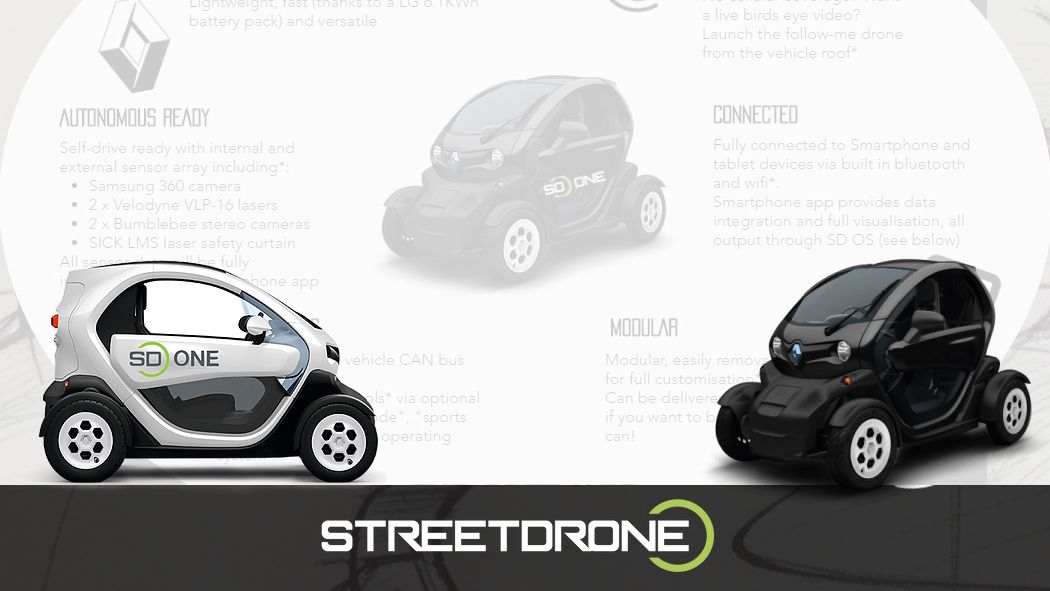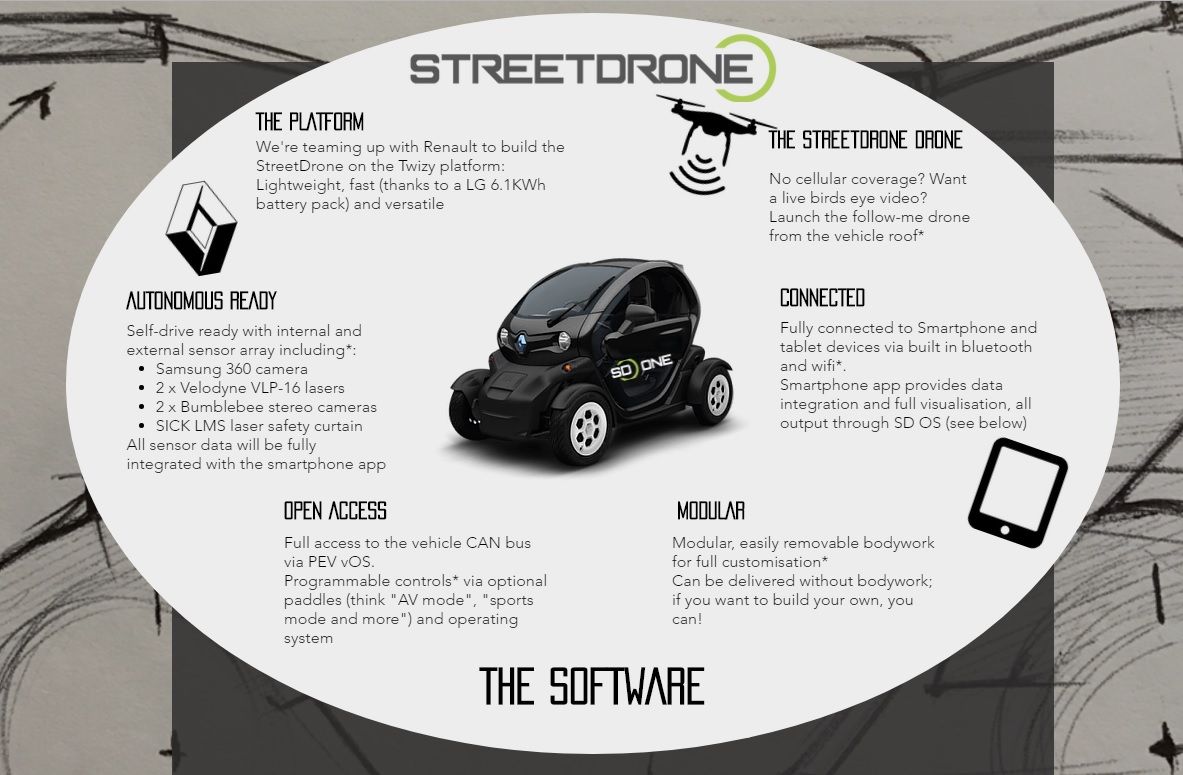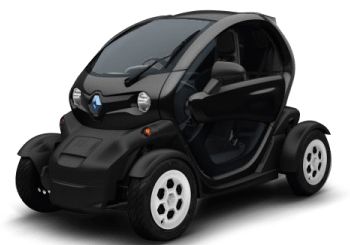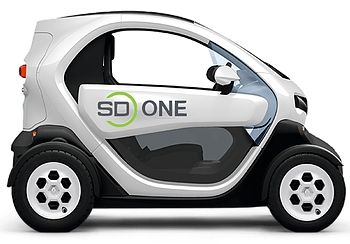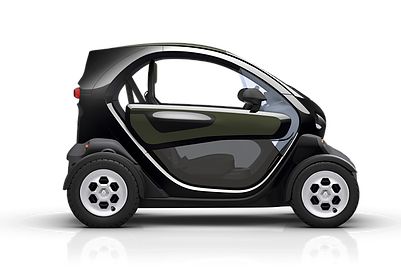Drones have been a small staple in our existence for the past few years. What started out as an expensive (depending on your perspective) toy for the rich and shameless, can now be had by anyone with $20 in the bank and a desire to drive household pets absolutely crazy. But, the definition of “drone” is set to change in the future with the introduction of the StreetDrone One. SteetDrone is an organization led by Mike Potts and Mark Preston, the latter of which has done extensive work in Formula E and has even worked with McLaren. These two men look to “accelerate and democratize the development of self-driving, electric vehicles.”
Self-driving cars are coming, no doubt, but the problem with autonomous technology and even electric cars is that development and testing are expensive – leaving development and testing of these new technologies in the hands of the large, wealthy automakers. But, that’s not the way dreams come true, is it? Hell, brands like Apple, HP, and even Google all started in someone’s garage, but with the insane cost of development and testing, there’s no chance a “little guy” could ever develop a true autonomous system without an excessive amount of money. StreetDrone One looks to change all of that by providing an affordable test bed that allows you to implement your own self-driving software and test it in the real world. Ultimately, it will bring autonomous development to the masses instead of leaving it in the hands of large automakers.
What we’re talking about here is a car, based on the Renault Twizy, that comes ready for programming so coders like you can see just how well your autonomous programming works without relying on computer simulation.
keep reading to learn more
The Package
So, StreetDrone has teamed up with Renault and came up with the setup you see above. It’s basically a Renault Twizy, complete with a 6.1-kWh battery pack that’s paired with all of the sensors you need for Level 3 autonomy programming and testing. These sensors include a 360-degree camera, two laser sensors, two stereo cameras, and a SICK LMS laser safety curtain. All sensor data is integrated and logged via an app on a linked smartphone or tablet. Connectivity is available via BlueTooth or Wi-Fi, and there’s even a drone that lives on the roof that can be deployed at any time to give you a “bird's eye view.”
The whole package comes with the SD OS, which is an operating system that facilitates communication between the built-in sensors and connected software. The SD Intelligent Development Platform is included and allows you to access autonomous coding that you can code yourself, work with another coder, or even trade your software with others – a truly open source platform. As StreetDrone describes it on their web page, “Our aim is to create the biggest repository of autonomous software in the world.”
The Car and the Options
The SD One isn’t on the market quite yet, but you can pre-order your own setup on the organization’s website. Options include various sensor setups that start out with just LiDAR. The next step up gets you a 360-degree camera, four low-resolution cameras, and radar sensors. You can opt for cameras only, which will get you the 360-degree unit and the four low-res cameras (basically, you skip the radar,) and finally, the fully loaded package gets you everything: Lidar, Radar, 360-degree camera, and four low-res cameras – it’s a whole sensor suite and the only way you can get LiDAR and radar in one package. For connectivity, you can opt for Wi-Fi or Bluetooth only, or double up and have them both, if you prefer.
The car itself comes “self-drive ready” which means it’s prepared to be driven remotely or via the hardware right out of the box. It’s drive-by-wire capable and is level-three autonomy compliant. There’s a 1 TB RAID drive onboard for data storage and comes complete with an iPad and a basic app for external sensor integration. So, to put it simply, it’s a four-wheeled drone that will let you dive into the world of autonomous development without spending a small fortune to get into the game.
There’s no word on pricing as of yet, but the first batch of SD Ones are in the works and shipping is expected to start in late 2017. The pre-order books are open, but pricing is determined based on exactly what you order. So, if you’re interested in seeing your autonomous coding function and be put to the test in real life, it’s best to reach out to the company to see what your ideal setup will actually cost. If there are any of you out there that really do inquire, reach out to us here, and let us know how much your setup is going to cost. Otherwise, let us know what you think about all of this in the comments section below.

